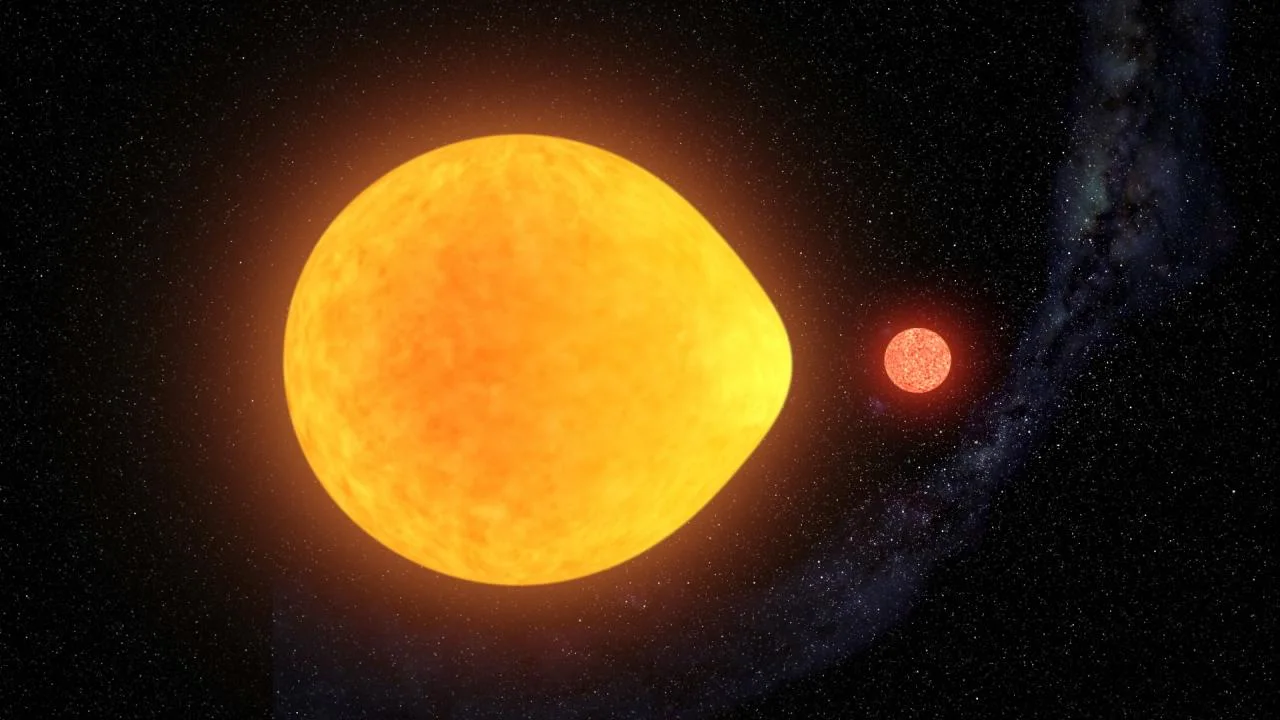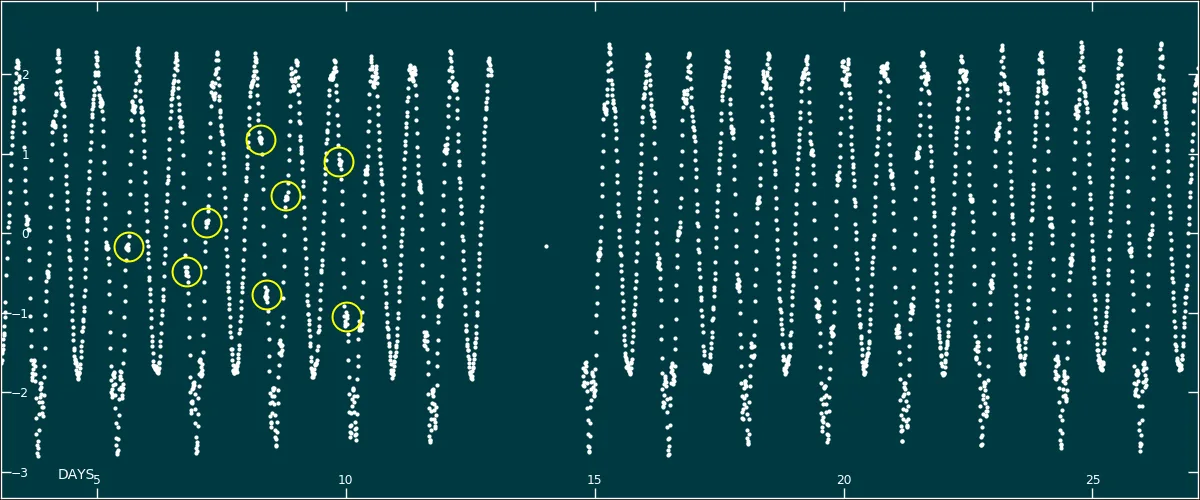
Strange pulses lead astronomers to first 'teardrop' star ever found
Citizen scientists played a large role in making this long-sought-after discovery
Citizen scientists have helped astronomers make a remarkable discovery. It isn't a strange or even life-sustaining planet. Instead, it is a type of teardrop-shaped star that astronomers have been trying to find for decades.
NASA's planet-hunting TESS telescope has been in space for over a year and a half now, looking for alien worlds around the nearest stars to Earth. It spots other exciting things, too, as it systematically scans the galaxy around us, such as asteroids, comets and distant supernovae.
When TESS gathered data on a star known as 'HD 74423', it found something unexpected.

This artist's impression depicts HD 74423, an eclipsing binary star system with an unusual twist. Credit: Gabriel Pérez (SMM-IAC)
First off, the star isn't just one star, but two. Second, the two stars are close enough together that the smaller star is pulling on the larger one, shaping it into a teardrop.
Thirdly, and most strangely, the larger star was pulsing with a bizarre pattern.
Now, pulsating stars are not rare. Our own Sun does so on an 11-year cycle. When astronomers have located one up until now, though, they've found that the entire star pulsates. In the case of HD 74423, though, it only pulses on one side!
"As the binary stars orbit each other," Paulina Sowicka, PhD student at the Nicolaus Copernicus Astronomical Center (CAMK PAN) and co-author of the study, said in a statement. "We see different parts of the pulsating star. Sometimes we see the side that points towards the companion star, and sometimes we see the outer face."
It was citizen scientists, looking at the data on Zooniverse's Planet Hunters TESS website, who spotted the curious way that this star behaved.
Robert Gagliano, with Yale University's Planet Hunters, and Tom Jacobs, an amateur astronomer from Bellevue, WA, both noted a strange pattern embedded in HD 74423's light curve.

TESS Planet Hunters data for star HD 74423. Credit: Zooniverse.
As shown in the above graphic, HD 74423 brightens and dims with a regular pattern, which identifies it as an 'eclipsing binary'. These two stars orbit around each other, and on each orbit, they pass in front of each other. The pair is brightest when we view them side by side. They dim slightly when the smaller companion passes in front of the larger star, and they are dimmest when the smaller star passes behind the larger star.
At the same time, though, Gagliano and Jacobs noticed the unusual 'hiccups' in the data (some examples are circled in yellow to highlight them). It was these 'hiccups' that pointed the researchers towards the idea that this was a new discovery and one that had been long sought-after.
"We've known, theoretically, that stars like this should exist since the 1980s," Professor Don Kurtz, a co-author of the study from the University of Central Lancashire, said in a press release. "I've been looking for a star like this for nearly 40 years, and now we have finally found one."
What's next? The team figures that it's only a matter of time before TESS finds more of these stars.
"Beyond its pulsations, there doesn't seem to be anything special about this system, so we expect to find many more hidden in the TESS data!" Saul Rappaport, a co-author and professor emeritus of physics at the Massachusetts Institute of Technology, said in a statement.
Sources: University of Sydney | IAC | CAMK PAN | Zooniverse










